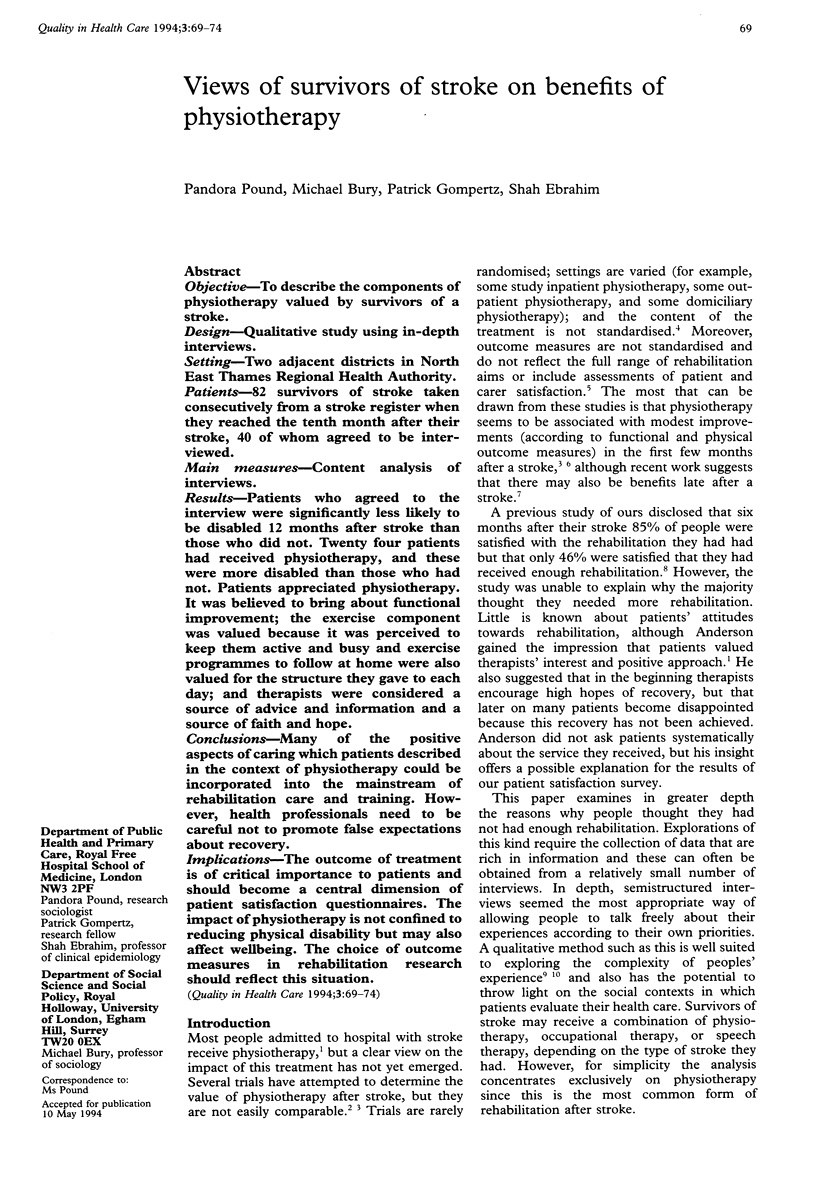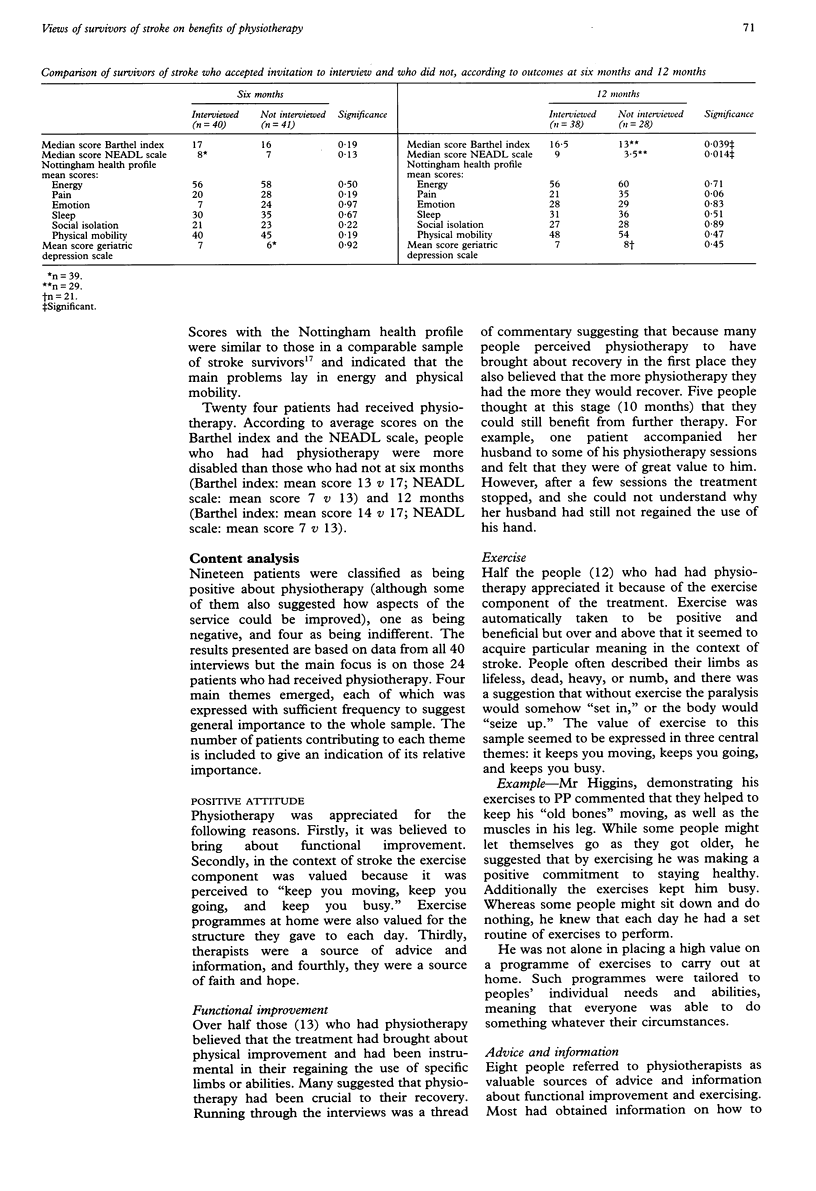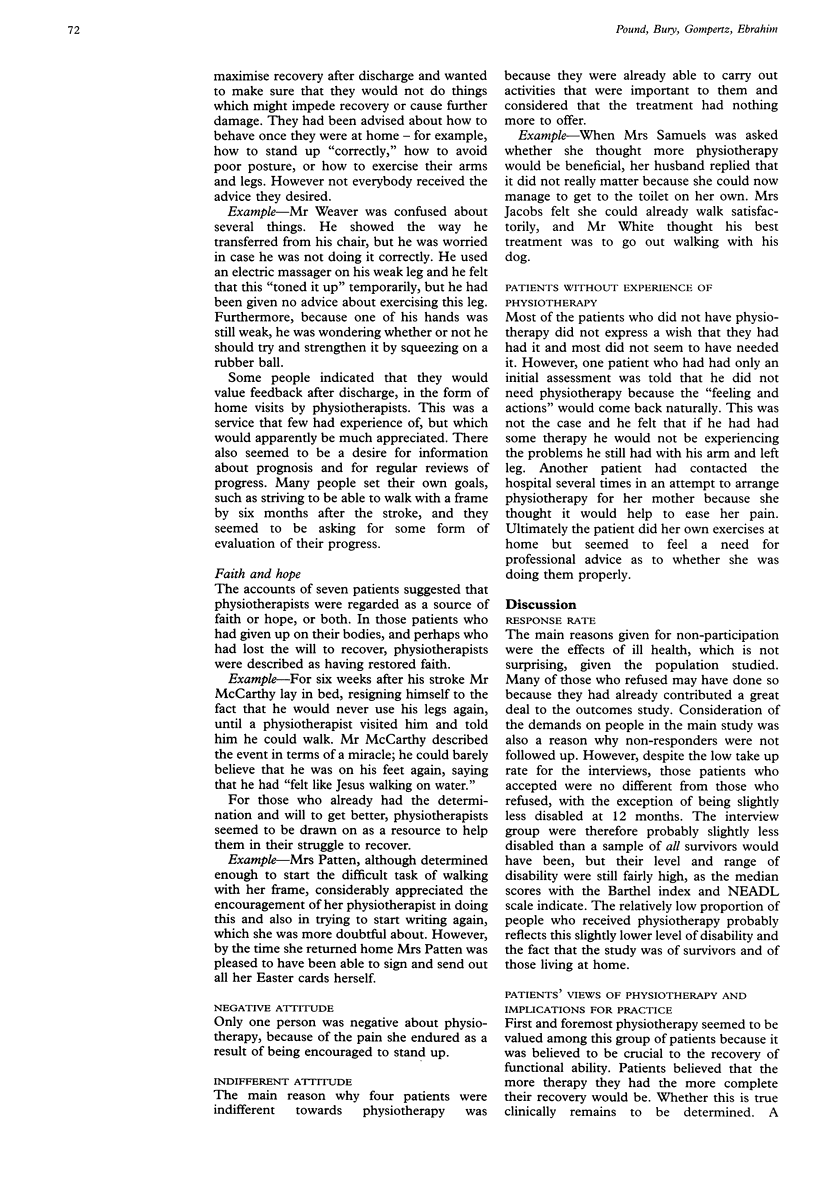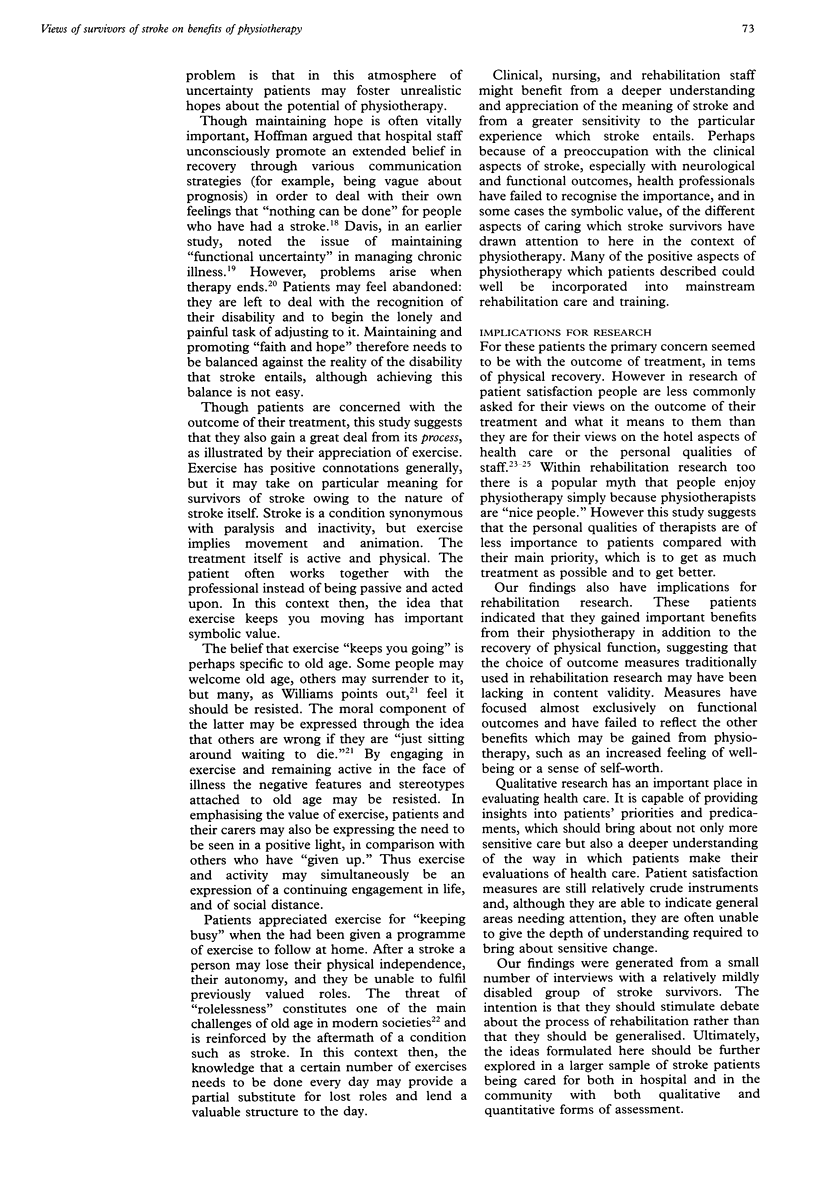Abstract
OBJECTIVE--To describe the components of physiotherapy valued by survivors of a stroke. DESIGN--Qualitative study using in-depth interviews. SETTING--Two adjacent districts in North East Thames Regional Health Authority. PATIENTS--82 survivors of stroke taken consecutively from a stroke register when they reached the tenth month after their stroke, 40 of whom agreed to be interviewed. MAIN MEASURES--Content analysis of interviews. RESULTS--Patients who agreed to the interview were significantly less likely to be disabled 12 months after stroke than those who did not. Twenty four patients had received physiotherapy, and these were more disabled than those who had not. Patients appreciated physiotherapy. It was believed to bring about functional improvement; the exercise component was valued because it was perceived to keep them active and busy and exercise programmes to follow at home were also valued for the structure they gave to each day; and therapists were considered a source of advice and information and a source of faith and hope. CONCLUSIONS--Many of the positive aspects of caring which patients described in the context of physiotherapy could be incorporated into the mainstream of rehabilitation care and training. However, health professionals need to be careful not to promote false expectations about recovery. IMPLICATIONS--The outcome of treatment is of critical importance to patients and should become a central dimension of patient satisfaction questionnaires. The impact of physiotherapy is not confined to reducing physical disability but may also affect wellbeing. The choice of outcome measures in rehabilitation research should reflect this situation.
Full text
PDF





Selected References
These references are in PubMed. This may not be the complete list of references from this article.
- Chapman S. Unravelling gossamer with boxing gloves: problems in explaining the decline in smoking. BMJ. 1993 Aug 14;307(6901):429–432. doi: 10.1136/bmj.307.6901.429. [DOI] [PMC free article] [PubMed] [Google Scholar]
- Cleary P. D., McNeil B. J. Patient satisfaction as an indicator of quality care. Inquiry. 1988 Spring;25(1):25–36. [PubMed] [Google Scholar]
- Ebrahim S., Barer D., Nouri F. Use of the Nottingham Health Profile with patients after a stroke. J Epidemiol Community Health. 1986 Jun;40(2):166–169. doi: 10.1136/jech.40.2.166. [DOI] [PMC free article] [PubMed] [Google Scholar]
- Freemantle N., Pollock C., Sheldon T. A., Mason J. M., Song F., Long A. F., Ibbotson S. Formal rehabilitation after stroke. Qual Health Care. 1992 Jun;1(2):134–137. doi: 10.1136/qshc.1.2.134. [DOI] [PMC free article] [PubMed] [Google Scholar]
- Holbrook M. Stroke: social and emotional outcome. J R Coll Physicians Lond. 1982 Apr;16(2):100–104. [PMC free article] [PubMed] [Google Scholar]
- Pope C., Mays N. Opening the black box: an encounter in the corridors of health services research. BMJ. 1993 Jan 30;306(6873):315–318. doi: 10.1136/bmj.306.6873.315. [DOI] [PMC free article] [PubMed] [Google Scholar]
- Seale C., Davies P. Outcome measurement in stroke rehabilitation research. Int Disabil Stud. 1987;9(4):155–160. doi: 10.3109/03790798709166353. [DOI] [PubMed] [Google Scholar]
- Tallis R. Rehabilitation of the elderly in the 21st century. The F. E. Williams Lecture 1992. J R Coll Physicians Lond. 1992 Oct;26(4):413–422. [PMC free article] [PubMed] [Google Scholar]
- Wade D. T., Collen F. M., Robb G. F., Warlow C. P. Physiotherapy intervention late after stroke and mobility. BMJ. 1992 Mar 7;304(6827):609–613. doi: 10.1136/bmj.304.6827.609. [DOI] [PMC free article] [PubMed] [Google Scholar]
- Yesavage J. A. Geriatric Depression Scale. Psychopharmacol Bull. 1988;24(4):709–711. [PubMed] [Google Scholar]


